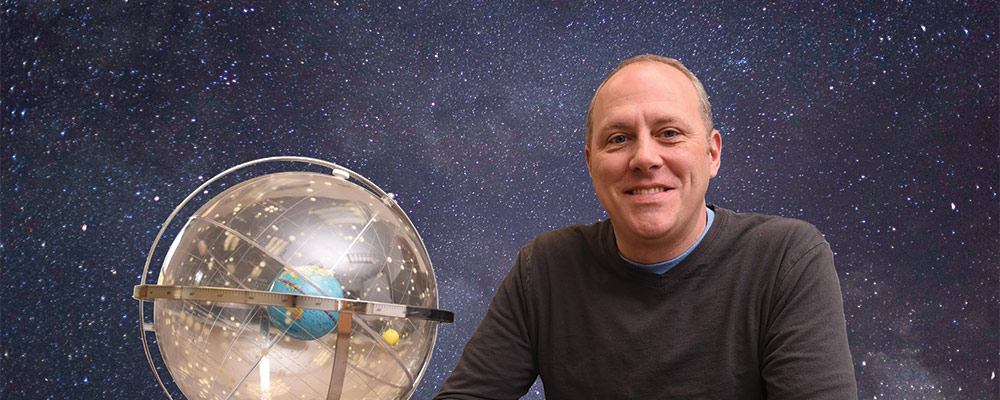“What we're trying to investigate is how early human cultures around the world viewed the sky, and how they incorporated astronomy and celestial objects into their daily lives—whether that's religious ceremonies, calendars, or buildings,” explains Matt Beaky, associate professor of physics and creator of the course.
For people living in Newgrange, Ireland 5,200 years ago, this meant erecting a burial tomb that allows light to pass through a small window precisely on the shortest day of the year, the Winter Solstice. “You see how winter and the shortest day are being associated with death,” explains Beaky. Across the world in North America, the Anasazi people of the American Southwest constructed pueblo buildings with windows that lined up so that the sun could pass through all of them at certain times.
Beaky developed the new course, taught in spring semester, for the Cultural Analysis curriculum.
Primary artifacts, or original works from people living in the civilizations being studied, are a key component for helping students learn about astronomy and early cultures. “We can study some of the original writing, or other things like globes, even if we can’t hold the artifacts in person,” says Beaky. “We can examine them and try to interpret, in the light of the cultural context, what they were used for and how they might have been used.”
“I like the overlap of history and science,” says Anna VanDusen ’18, of Wexford, Pa. “It’s such a popular cultural and historical topic, but I didn’t know that much about it before.”
Beaky also has his students look up at the night sky. “The main thing they do is keep a sky journal. It’s a digital, print, or handwritten journal observing the sky for over two months. They write what they see or maybe draw what they see, and also reflect on what they see in light of what we talked about in class,” Beaky says. “I think if you’re going to study astronomy, especially archeoastronomy, you have to try to put yourselves in the shoes of people in the past.”







